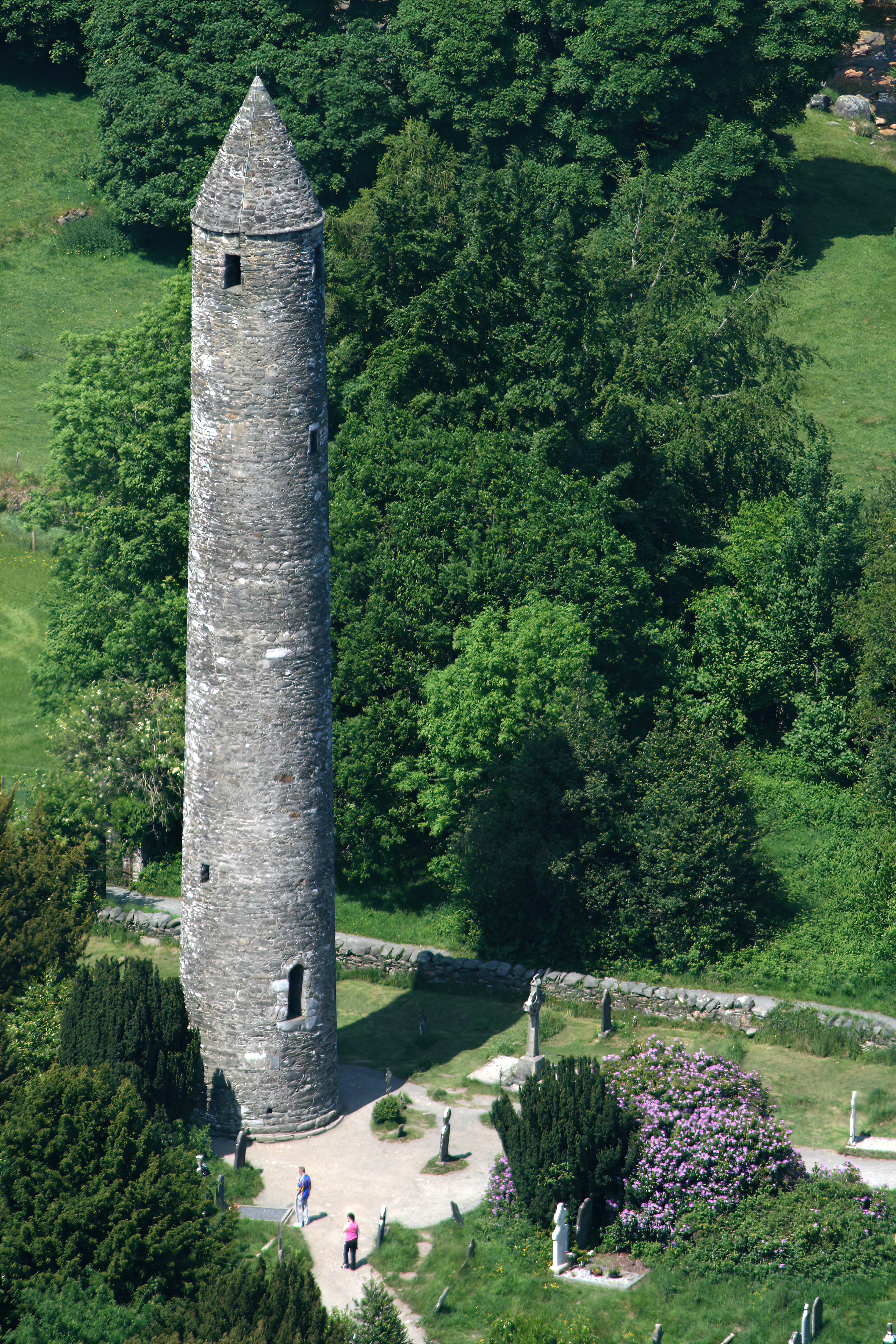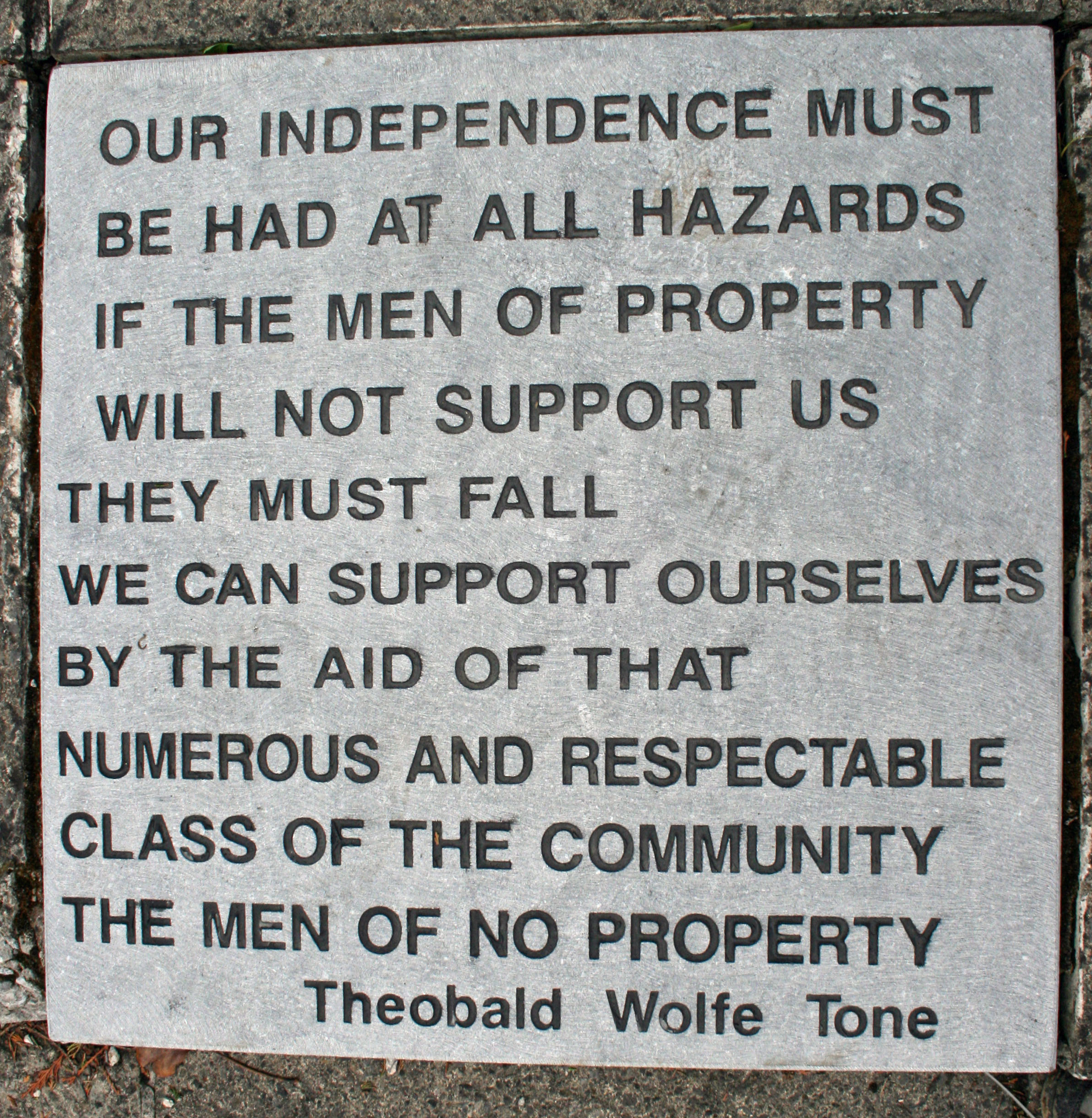|
Ram's Island, Northern Ireland
Ram’s Island is the largest island in Lough Neagh, Northern Ireland. It lies near the eastern shore of the lake and is about long by wide. Thickly wooded, it is a wildlife haven and includes the ruins of a medieval Irish round tower. History The island's original Irish name was ''Inis Dar Cairgrenn'', which could mean "island of Cairgriu's daughter", and later became ''Inis Dairgreann''.Ram's Island Place Names NI. This name was anglicized as "Enish Garden" and also survives in the name of an area on the mainland called "Darachrean". |
Lough Neagh
Lough Neagh ( ) is a freshwater lake in Northern Ireland and is the largest lake in the island of Ireland, the United Kingdom and the British Isles. It has a surface area of and supplies 40% of Northern Ireland's water. Its main inflows come from the Upper River Bann and River Blackwater, and its main outflow is the Lower River Bann. Its name comes from Irish , meaning " Eachaidh's lake".Deirdre Flanagan and Laurance Flanagan, Irish Placenames, (Gill & Macmillan Ltd, 1994) The lough is owned by the Earl of Shaftesbury and managed by Lough Neagh Partnership Ltd. Geography With an area of , it is the British Isles' largest lake by area and is ranked 33rd in the list of largest lakes of Europe. Located west of Belfast, it is about long and wide. It is very shallow around the margins and the average depth in the main body of the lake is about , although at its deepest the lough is about deep. Geology Geologically the Lough Neagh Basin is a depression, built from many tecto ... [...More Info...] [...Related Items...] OR: [Wikipedia] [Google] [Baidu] |
Northern Ireland
Northern Ireland ( ga, Tuaisceart Éireann ; sco, label= Ulster-Scots, Norlin Airlann) is a part of the United Kingdom, situated in the north-east of the island of Ireland, that is variously described as a country, province or region. Northern Ireland shares an open border to the south and west with the Republic of Ireland. In 2021, its population was 1,903,100, making up about 27% of Ireland's population and about 3% of the UK's population. The Northern Ireland Assembly (colloquially referred to as Stormont after its location), established by the Northern Ireland Act 1998, holds responsibility for a range of devolved policy matters, while other areas are reserved for the UK Government. Northern Ireland cooperates with the Republic of Ireland in several areas. Northern Ireland was created in May 1921, when Ireland was partitioned by the Government of Ireland Act 1920, creating a devolved government for the six northeastern counties. As was intended, Northern Ireland ... [...More Info...] [...Related Items...] OR: [Wikipedia] [Google] [Baidu] |
Irish Round Tower
Irish round towers ( ga, Cloigtheach (singular), (plural); literally 'bell house') are early mediaeval stone towers of a type found mainly in Ireland, with two in Scotland and one on the Isle of Man. As their name indicates, they were originally bell towers, though they may have been later used for additional purposes. A tower of this kind is generally found in the vicinity of a church or monastery, with the door of the tower facing the west doorway of the church. Knowledge of this fact has made it possible, where towers still exist, to determine without excavation the approximate sites of lost churches that once stood nearby. Construction and distribution Surviving towers range in height from to , and to in circumference; that at Kilmacduagh being the highest surviving in Ireland (and leaning out of perpendicular). The masonry differs according to date, the earliest examples being uncut rubble, while the later ones are of neatly joined stonework (ashlar). The lower port ... [...More Info...] [...Related Items...] OR: [Wikipedia] [Google] [Baidu] |
Placenames Database Of Ireland
The Placenames Database of Ireland ( ga, Bunachar Logainmneacha na hÉireann), also known as , is a database and archive of place names in Ireland. It was created by Fiontar, Dublin City University in collaboration with the Placenames Branch of the Department of Tourism, Culture, Arts, Gaeltacht, Sport and Media. The website is a public resource primarily aimed at journalists and translators, students and teachers, historians and researchers in genealogy. Placenames Commission and Placenames Branch The Placenames Commission ( ga, an Coimisiún Logainmneacha) was established by the Department of Finance (Ireland), Department of Finance in 1946 to advise Ordnance Survey Ireland and the government of what the Irish name of places should be. Although both the 1922 Constitution of the Irish Free State and the Constitution of Ireland, current constitution adopted in 1937 recognised Irish as the national language, the law in regard to placenames was carried over from the 19th-century ... [...More Info...] [...Related Items...] OR: [Wikipedia] [Google] [Baidu] |
Redmond O'Hanlon (outlaw)
Count Redmond O'Hanlon ( ga, Réamonn Ó hAnluain), (c. 1640 – 25 April 1681) was a 17th-century Irish tóraidhe or rapparee; an outlawed member of the Gaelic nobility of Ireland who still held to the code of conduct of the traditional chiefs of the Irish clans. Historian John J. Marshall has called Redmond O'Hanlon Ireland's answer to Robin Hood and Rob Roy MacGregor. Stephen Dunford has further dubbed O'Hanlon, "The Irish Skanderbeg." Family background Although born in impoverished circumstances, Redmond was part of the ''Derbfine'' of the last Ó hAnluain, O'Hanlon Chief of the Name, Tigerna, Lord of Airgíalla, and Master of Tandragee Castle. During the Nine Years War (Ireland), Nine Years' War, Sir Oghie O'Hanlon had allied the Clan with Queen Elizabeth I of England against Hugh O'Neill, Earl of Tyrone, Hugh O'Neill and Red Hugh O'Donnell. In 1606, Sir Oghie received his Clan's lands under the policy of Surrender and regrant. According to Royal decree, the family's m ... [...More Info...] [...Related Items...] OR: [Wikipedia] [Google] [Baidu] |
United Irishmen
The Society of United Irishmen was a sworn association in the Kingdom of Ireland formed in the wake of the French Revolution to secure "an equal representation of all the people" in a national government. Despairing of constitutional reform, in 1798 the United Irishmen instigated Irish Rebellion of 1798, a republican insurrection in defiance of British Crown forces and of Irish sectarianism, sectarian division. Their suppression was a prelude to the abolition of the Protestant Ascendancy Parliament of Ireland, Parliament in Dublin and to Ireland's incorporation in a United Kingdom of Great Britain and Ireland, United Kingdom with Kingdom of Great Britain, Great Britain. An attempt to revive the movement and renew the insurrection following the Acts of Union 1800, Acts of Union was Irish rebellion of 1803, defeated in 1803. Espousing principles they believed had been vindicated by American Revolutionary War, American independence and by the Declaration of the Rights of Man and ... [...More Info...] [...Related Items...] OR: [Wikipedia] [Google] [Baidu] |
Wolfe Tone
Theobald Wolfe Tone, posthumously known as Wolfe Tone ( ga, Bhulbh Teón; 20 June 176319 November 1798), was a leading Irish revolutionary figure and one of the founding members in Belfast and Dublin of the United Irishmen, a republican society determined to end British rule, and achieve accountable government, in Ireland. Throughout his political career, Tone was involved in a number of military engagements against the British navy. He was active in drawing Irish Catholics and Protestants together in the United cause, and in soliciting French assistance for a general insurrection. In November 1798, on his second attempt to land in Ireland with French troops and supplies, he was captured by British naval forces. The United Irish risings of the summer had already been crushed. Tone died in advance of his scheduled execution, probably, as modern scholars generally believe, by his own hand. Later generations were to regard Tone as the father of Irish Republicanism. His grave in ... [...More Info...] [...Related Items...] OR: [Wikipedia] [Google] [Baidu] |
Baron O'Neill
Baron O'Neill, of Shane's Castle in the County of Antrim, is a title in the Peerage of the United Kingdom. It was created in 1868 for the musical composer The Reverend William O'Neill. Born William Chichester, he succeeded to the estates of his cousin John Bruce Richard O'Neill, 3rd Viscount O'Neill, in 1855 (on whose death the viscountcy and barony of O'Neill became extinct) and assumed by Royal licence the surname of O'Neill in lieu of Chichester in order to inherit the lands of his cousin, despite not being descended in the male line from an O'Neill. The Chichesters trace their lineage to the name O'Neill through Mary Chichester, daughter of Henry O'Neill of Shane's Castle. Lord O'Neill was the patrilineal great-great-great-grandson of John Chichester, younger brother of Arthur Chichester, 2nd Earl of Donegall.Debrett’s Peerage and Baronetage 1995, edited by Charles Kidd and David Williamson, published by Debrett’s Peerage Limited, and Macmillan Reference Books, London, 19 ... [...More Info...] [...Related Items...] OR: [Wikipedia] [Google] [Baidu] |
Second World War
World War II or the Second World War, often abbreviated as WWII or WW2, was a world war that lasted from 1939 to 1945. It involved the vast majority of the world's countries—including all of the great powers—forming two opposing military alliances: the Allies and the Axis powers. World War II was a total war that directly involved more than 100 million personnel from more than 30 countries. The major participants in the war threw their entire economic, industrial, and scientific capabilities behind the war effort, blurring the distinction between civilian and military resources. Aircraft played a major role in the conflict, enabling the strategic bombing of population centres and deploying the only two nuclear weapons ever used in war. World War II was by far the deadliest conflict in human history; it resulted in 70 to 85 million fatalities, mostly among civilians. Tens of millions died due to genocides (including the Holocaust), starvation, ma ... [...More Info...] [...Related Items...] OR: [Wikipedia] [Google] [Baidu] |
Royal Air Force
The Royal Air Force (RAF) is the United Kingdom's air and space force. It was formed towards the end of the First World War on 1 April 1918, becoming the first independent air force in the world, by regrouping the Royal Flying Corps (RFC) and the Royal Naval Air Service (RNAS). Following the Allied victory over the Central Powers in 1918, the RAF emerged as the largest air force in the world at the time. Since its formation, the RAF has taken a significant role in British military history. In particular, it played a large part in the Second World War where it fought its most famous campaign, the Battle of Britain. The RAF's mission is to support the objectives of the British Ministry of Defence (MOD), which are to "provide the capabilities needed to ensure the security and defence of the United Kingdom and overseas territories, including against terrorism; to support the Government's foreign policy objectives particularly in promoting international peace and security". The R ... [...More Info...] [...Related Items...] OR: [Wikipedia] [Google] [Baidu] |
Flying Boat
A flying boat is a type of fixed-winged seaplane with a hull, allowing it to land on water. It differs from a floatplane in that a flying boat's fuselage is purpose-designed for floatation and contains a hull, while floatplanes rely on fuselage-mounted floats for buoyancy. Though the fuselage provides buoyancy, flying boats may also utilize under-wing floats or wing-like projections (called sponsons) extending from the fuselage for additional stability. Flying boats often lack landing gear which would allow them to land on the ground, though many modern designs are convertible amphibious aircraft which may switch between landing gear and flotation mode for water or ground takeoff and landing. Ascending into common use during the First World War, flying boats rapidly grew in both scale and capability during the interwar period, during which time numerous operators found commercial success with the type. Flying boats were some of the largest aircraft of the first half of the 2 ... [...More Info...] [...Related Items...] OR: [Wikipedia] [Google] [Baidu] |









